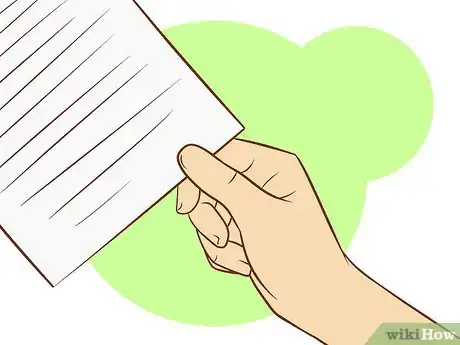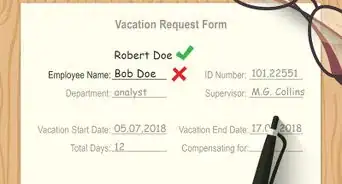wikiHow is a “wiki,” similar to Wikipedia, which means that many of our articles are co-written by multiple authors. To create this article, 21 people, some anonymous, worked to edit and improve it over time.
There are 9 references cited in this article, which can be found at the bottom of the page.
This article has been viewed 34,160 times.
Learn more...
4-H is a youth organization that offers many opportunities for youth ages 5-19 to meet new friends, learn new skills, experience leadership, contribute to community, and much more! The four H's of 4-H stand for Head, Heart, Hands, and Health, the four main values of 4-H and the principles that members develop through 4-H activities and programs. Joining 4-H is easy — usually, it's simply a matter of finding, contacting, and applying to a local chapter!
Steps
Becoming a Member
-
1Find a local 4-H branch. Admissions to 4-H are handled at a local level, rather than at a national. This means that to become a member, you need to get in touch with the 4-H office that's nearest to you. There are a number of easy ways to find 4-H branches near you — just a few are listed below:
- Use the 4-H website. Visit the official 4-H website (4-h.org) and click on the link at the top of the page that says "Find a Club." On the next page, select your state and county to get your local club's office as well as the main state office.[1]
- Talk to counselors or administrators at your local school, who will probably be aware of local youth programs.
- Use local phone books, such as the yellow pages.
-
2Get in touch with a local club. At your local or county branch's website (which should be listed on the page if you used the 4-H online office locator), you should find information about 4-H clubs in the area. Once you find a club you'd like to join, reach out! Contact the club to learn about its meeting schedule, its eligibility requirements, and its application process.
- Usually, local clubs' contact info is located on the state or county 4-H branch website. Depending on the club, you may need to call, email, or even show up in person to start the application process.
Advertisement -
3Make sure you meet your club's eligibility requirements. Before you begin to apply, it's important to make sure you meet the requirements for joining your local club. In general, children from ages five and up may join 4-H and are eligible through the calendar year of their high school graduation. Note, however, that the 4-H programs available to different applicants will vary based on their age.
- Note also that precise eligibility requirements can vary from state to state and even club to club. For instance, in Alaska, admission to 4-H requires simply filling out a single-page form and contacting your district agent.[2] However, in California, families must register an online profile with the state 4-H office to enroll their children in 4-H programs.
- If your child is ages 5-7(or in some cases 8), they will be considered a "cloverbud" in most instances. Be aware that while they will likely be able to join most clubs, especially ones that do various crafts, they may not be able to do certain activities involving animals or power tools because they aren't the minimum age.
-
4Sign up! Complete your club's application materials to become a full 4-H member. Many clubs will require you to submit medical release and liability forms as part of your application — if you're a child or teen, you may need to get an adult to help you with these parts. Many clubs will also require a small application and/or insurance fee to begin your membership.[3]
- Once you're done with the application process, you can start going to 4-H meetings and events! Anyone can be involved in this exciting program! The popular myth that 4-H is only for rural kids is not true — 4-H has clubs in and around urban areas (like, for instance, Los Angeles).[4] Youth of all ages can be members in projects ranging from creative writing to community service, from aerospace projects to raising a goat. The list of projects is endless!
Being a Great 4H Member
-
1Participate in all that 4-H has to offer. Depending on your club affiliation, there will usually be dozens of opportunities available to you as soon as you join 4-H. To get the most out of these opportunities, be an active 4-H member: attend your club's meetings, participate in group activities, pitch in for community service projects, and more. Here is just a small sample of programs and activities that 4-H members can potentially participate in:
- Science projects (robotics, aerospace, engineering, environmental science, and more)
- Civics projects (tours, field trips, leadership summits, and more)[5]
- Art projects (photography, theater, reading/writing, and more)
- Community service projects (environmental stewardship, community outreach, activism, and more)
-
2Embody the 4-H values. The four H's of 4-H (Head, Heart, Hands, and Health) represent the four core pillars that 4-H members should hold in high importance. Members are encouraged to know and display these values both during 4-H activities and during their daily lives. Members are also encouraged to strive to continuously strengthen these values during their time in 4-H and beyond.
- 4-H members' relationship with the 4-H values is perhaps best summed up in the official 4-H pledge: "I pledge my head to clearer thinking, my heart to greater loyalty, my hands to larger service, and my health to better living, for my club, my community, my country, and my world."[6]
-
3Get involved in your community. 4-H members should have a genuine desire to make the world a better place. While many 4-H opportunities can be fun, enriching opportunities for oneself, it's also important to spend time giving back to the community. Most 4-H clubs will offer plenty of opportunities for community service, though 4-H members are also encouraged to be active participants in their community after they become too old for 4-H as well.
-
4Strive to improve yourself. Almost anyone can join 4-H. However, 4-H members, regardless of their ability, should try to improve their minds, bodies, and souls according to the 4-H values. This means getting plenty of exercise, eating right, working hard at school, and taking every opportunity possible to help someone else. By developing these habits of self-improvement early, 4-H members prepare themselves for healthy, full, active lives full of challenges and achievements.
- Studies have shown that, on average, 4-H members go on to be better-than-average adults. Young people who joined 4-H have been found to be more politically active, more likely to participate in community service, more likely to excel in academics, and less likely to use alcohol, tobacco, or drugs than young people who don't join 4-H.
Volunteering as an Adult
-
1Contact your local club as above. Your 4-H experience doesn't necessarily need to end when you graduate high school! Adults are always needed in 4-H clubs to be leaders and chaperones for 4-H projects. Share your talents by volunteering to help young people have new experiences, improve their community, and better themselves.
- As with joining 4-H as a youth, your first step to volunteering as an adult is to find and contact a local branch you'd like to participate with. If you've previously been an active 4-H member, you can probably simply talk to the current branch leadership, who will already know you. On the other hand, if you're joining for the first time, it's probably best to contact the state or county branch offices.
-
2Submit an application. Most adult volunteer programs for 4-H will require you to fill out some sort of application form to prove that you are eligible for the position and responsible enough to be trusted in a leadership role. Usually, these are available through the state or county branch websites, though application process can vary depending on your locality, so some in-person action may be required.
- For example, to become an adult volunteer in the state of California must first complete an application form along with medical and liability release forms online. Then, the club leader for the club the applicant is applying to must review and confirm the application. Finally, the county office must review the application and either approve or deny the volunteer's application.[7]
-
3Complete your orientation. Many 4-H adult volunteer programs will have some sort of orientation process for new members. These can vary from branch to branch — some may be simple enough to be completed online in an afternoon, while others may require your in-person presence.
- For example, in California, volunteer applicants much watch an orientation video (available online), read a volunteer training guide, and attend approximately two hours of in-person group sessions.[8]
-
4Choose your role within 4-H. Once you've been approved and have completed your orientation/training, you can usually begin your work as a volunteer immediately! Depending on your club/branch affiliation, different opportunities may be available to you. You may be asked, for instance, to lead field trips, help organize fundraisers, or supervise community service projects, to name a few possibilities.[9] You may even be asked to design and spearhead projects of your own — it all depends on the 4-H organization you join and the level of commitment you're willing to make!
- 4-H volunteers are expected to act as role models for the youth under their supervision, so regardless of your exact role, you'll be required to act in accordance with 4-H values to set an example for those around you.
- Note that, in some areas, being bilingual can open up many opportunities for you as a volunteer. In California, for instance, 4-H specifically prizes volunteers who can speak Spanish because this skill allows them to be more effective leaders for Spanish-speaking youth, to participate in Hispanic community programs, and to act as translators for other staff.
Warnings
- Although there are 4-H clubs in every U.S. state and territory, there may not be a 4-H club near you. If so, read up about 4-H on the internet and start one yourself! With some advertising and volunteers, you can get a bustling 4-H club going in your community. It is very worth the effort!⧼thumbs_response⧽
References
- ↑ http://www.4-h.org/get-involved/find-4-h-clubs-camps-programs/
- ↑ http://www.alaska4h.org/uploads/1/4/0/2/14026701/akmember.pdf
- ↑ http://ucanr.edu/sites/smsf4h/Join/Youth/
- ↑ http://celosangeles.ucanr.edu/about/
- ↑ http://www.4hcenter.org/youth-conference-center-overview/educational-programs/citizenship-washington-focus/
- ↑ http://www.4-h.org/about/
- ↑ http://4h.ucanr.edu/files/184183.pdf
- ↑ http://4h.ucanr.edu/Resources/Volunteers/
- ↑ http://4h.ucanr.edu/Programs/Clubs/Adults/
About This Article
To join the youth organization 4-H, start by visiting the 4-H website to find out about branches in your area. Once you’ve found a club near you, contact them using the information provided to find out about their meeting schedule. You should also complete any necessary application forms, which can vary from state to state. If you’re under 18, you may need to get your parents’ permission to complete your application. After you’ve submitted the application and paid a small insurance fee, start attending your club and participating in its projects. To learn more about how to embody 4-H’s values, keep reading!






































































